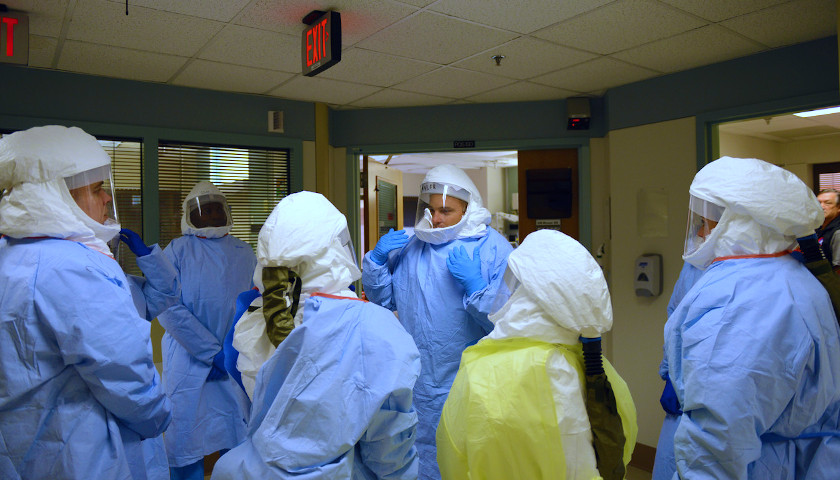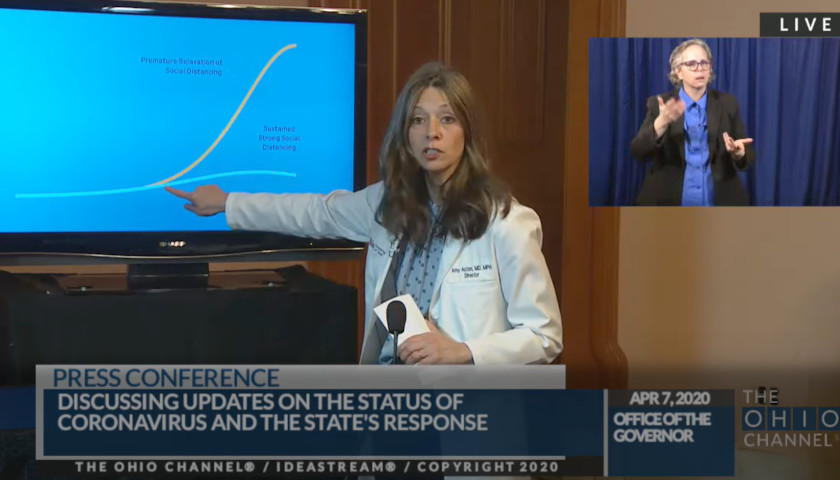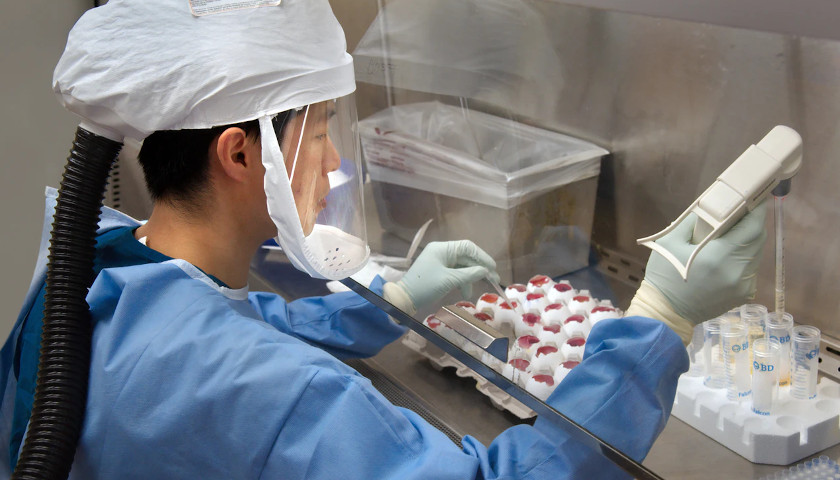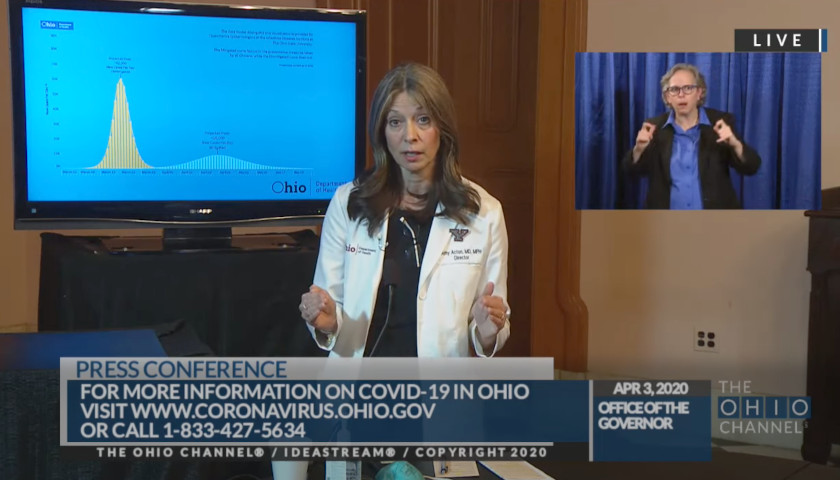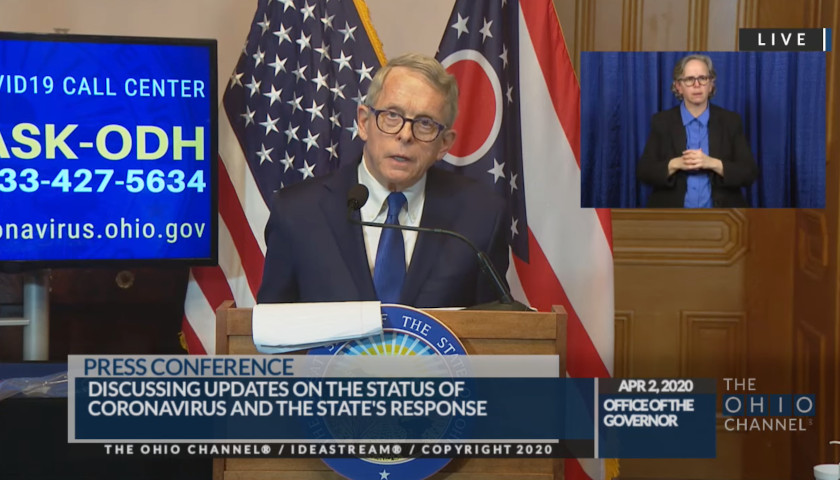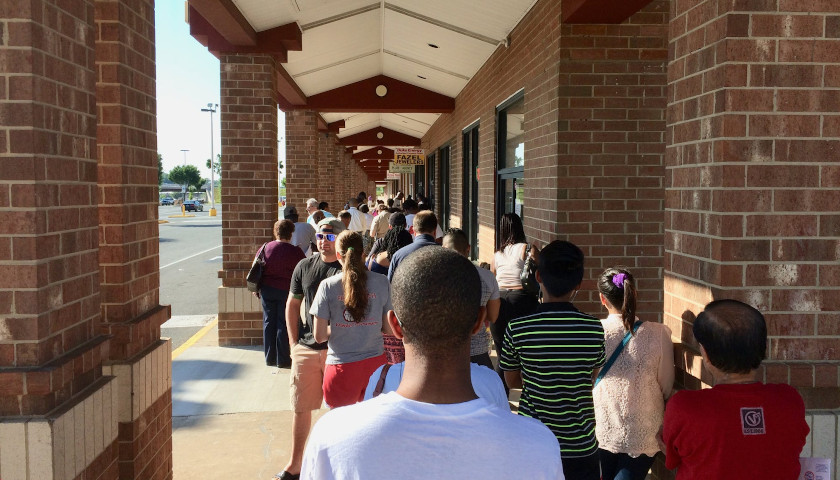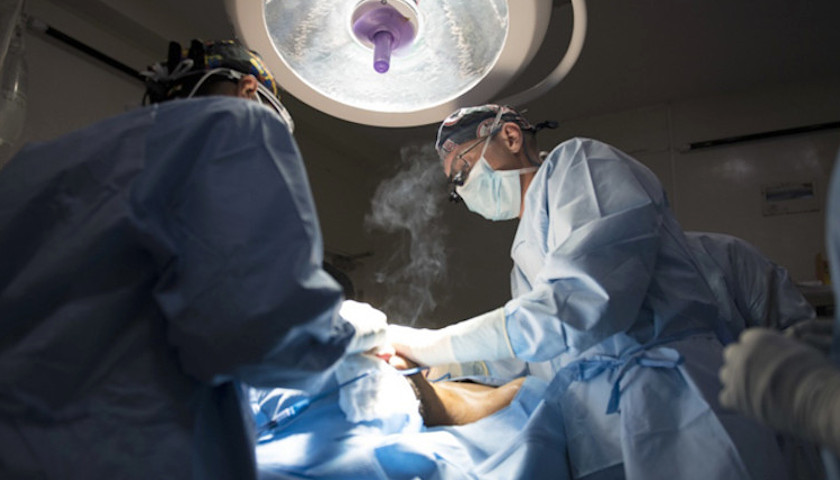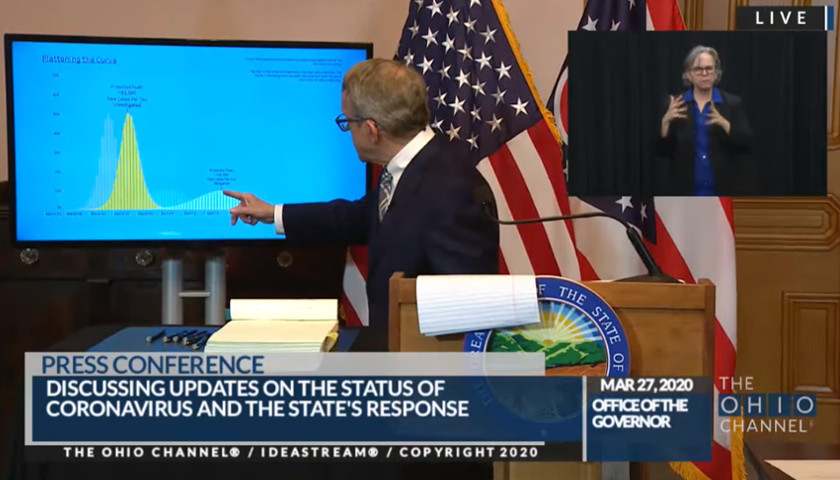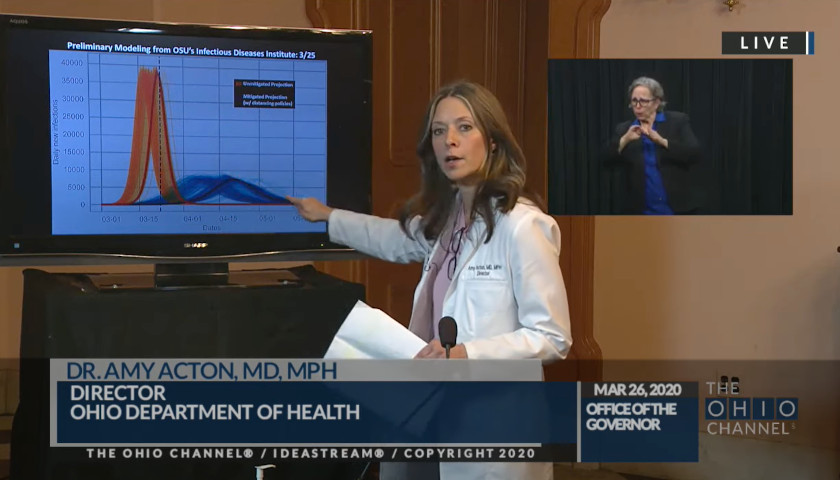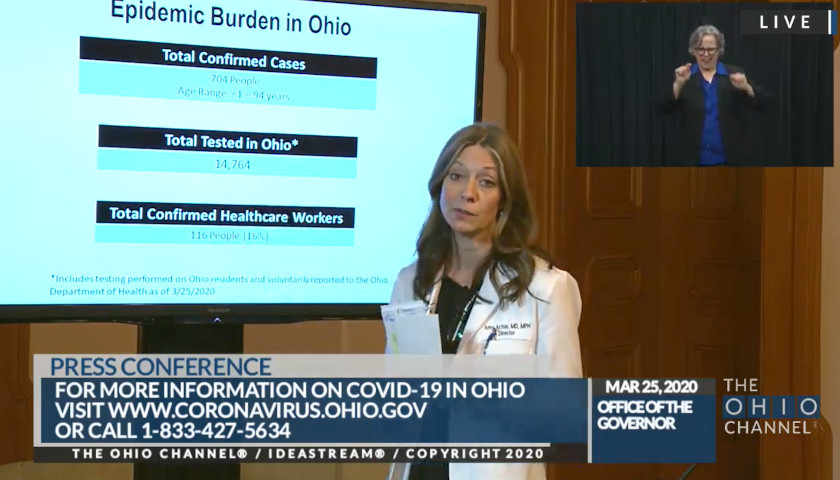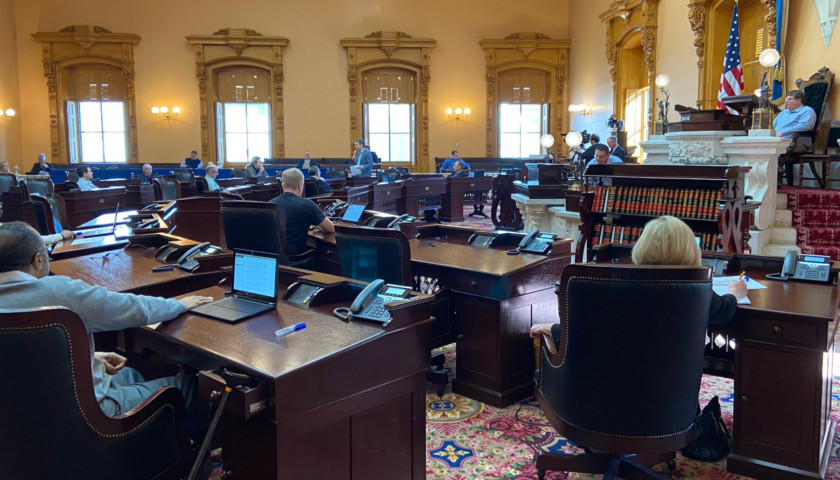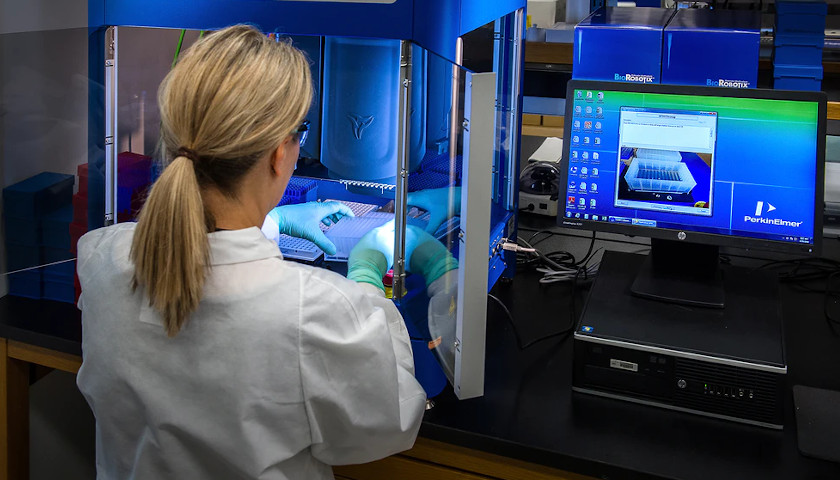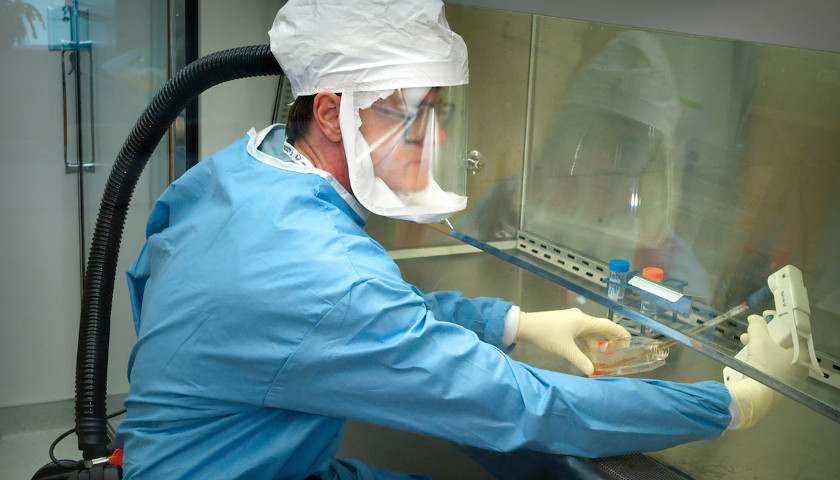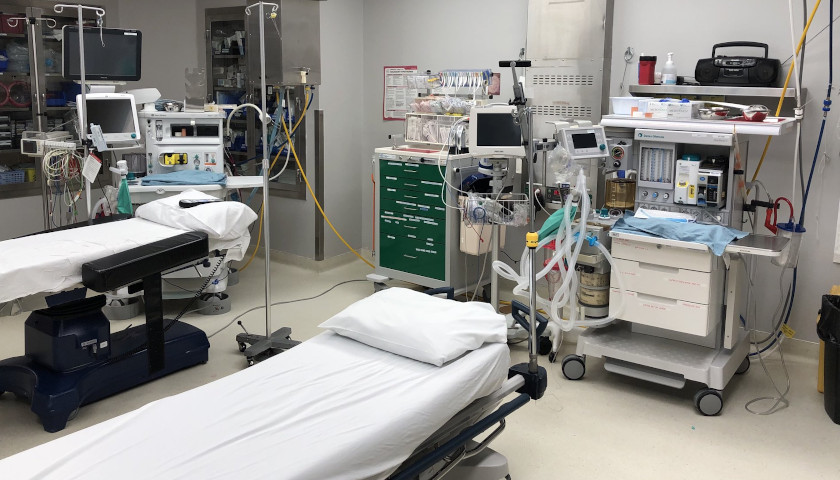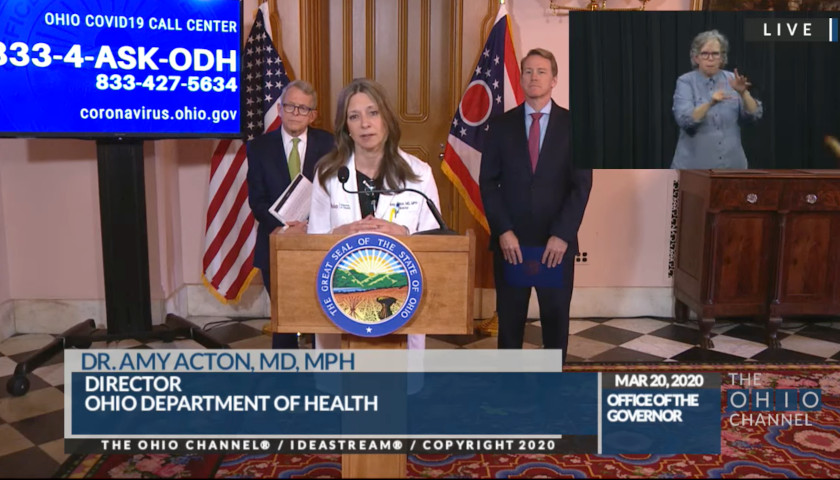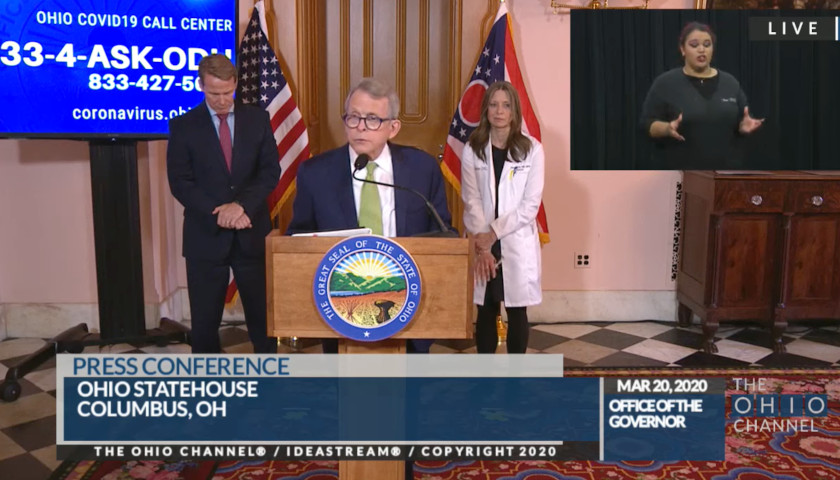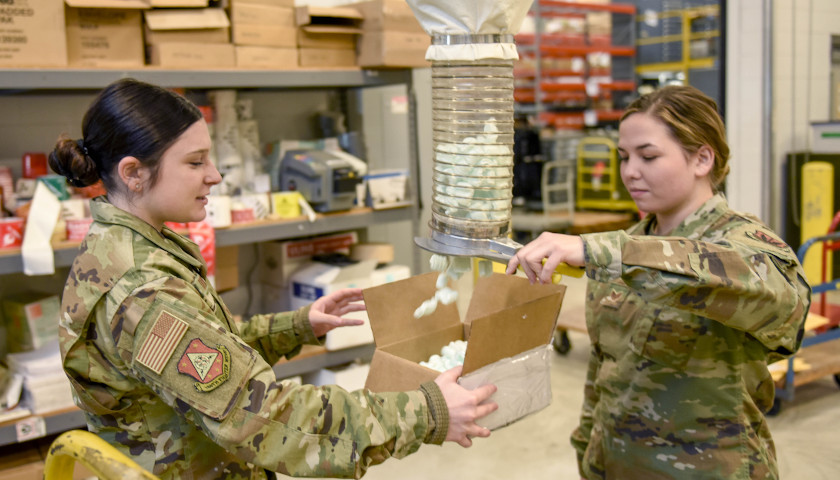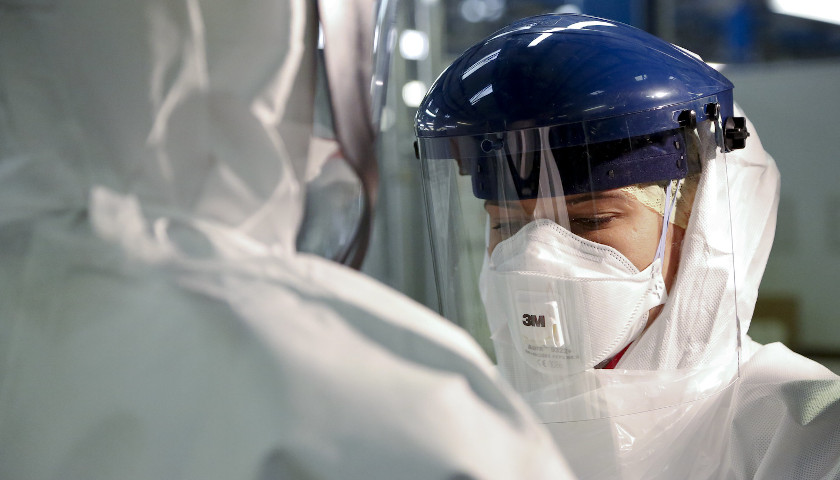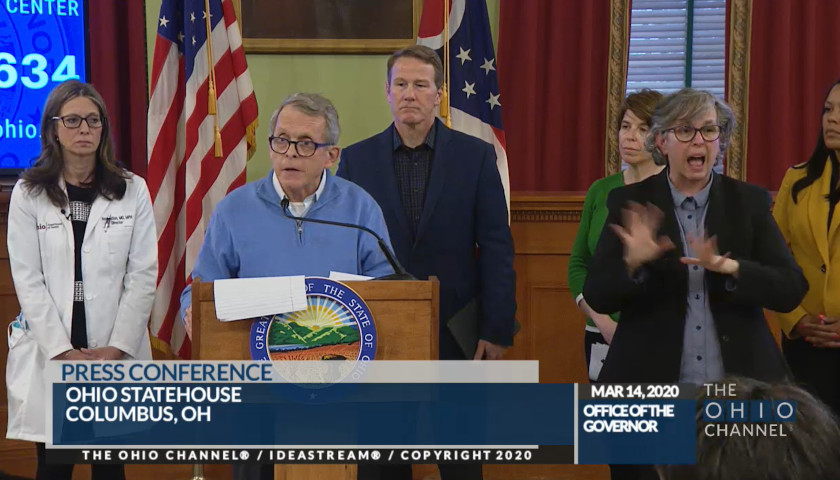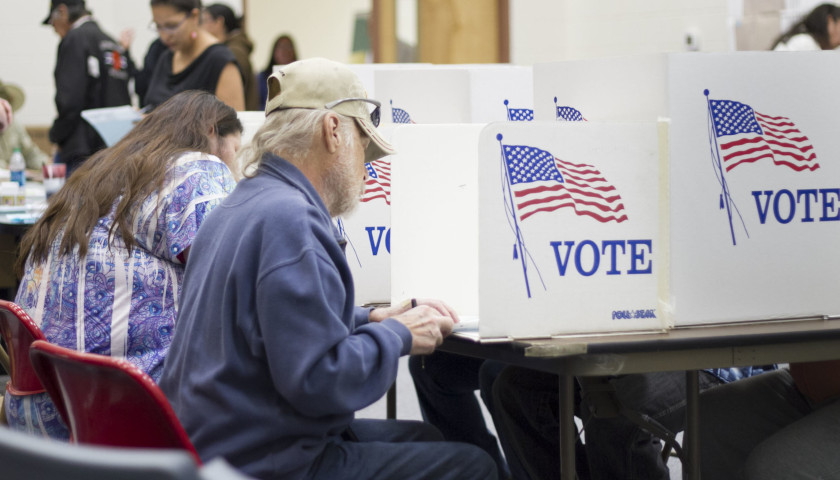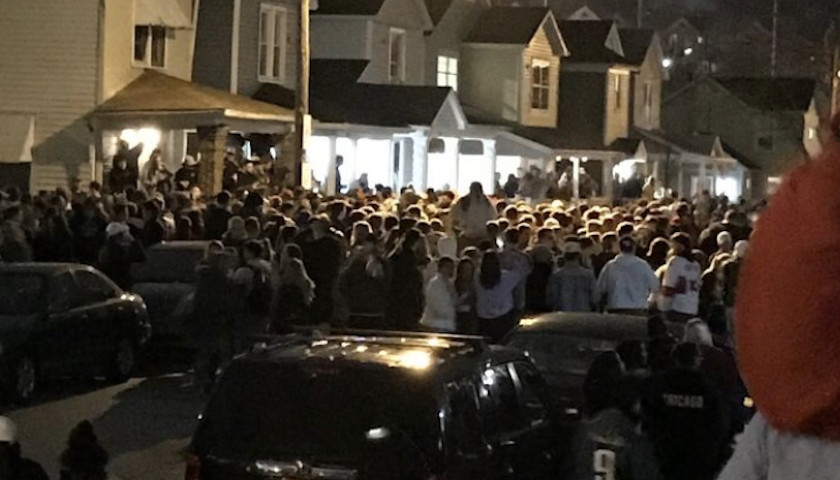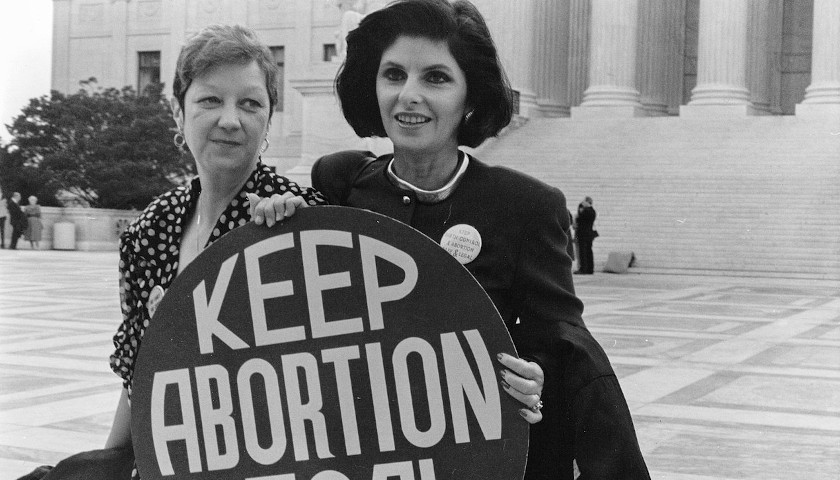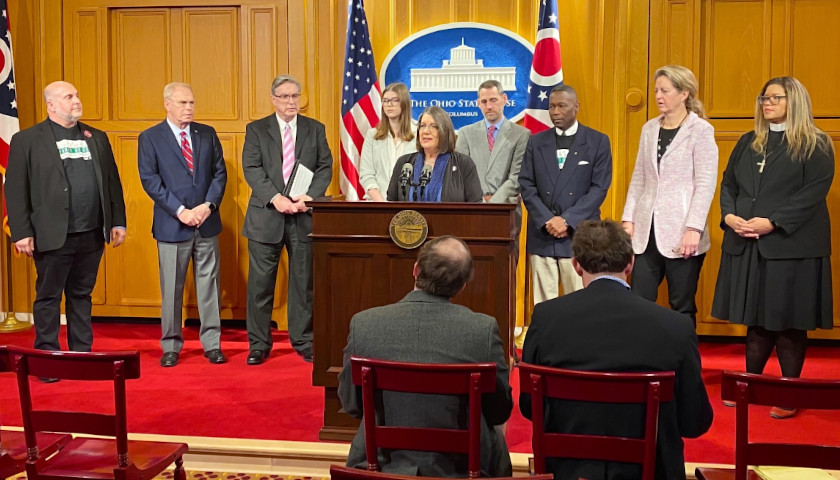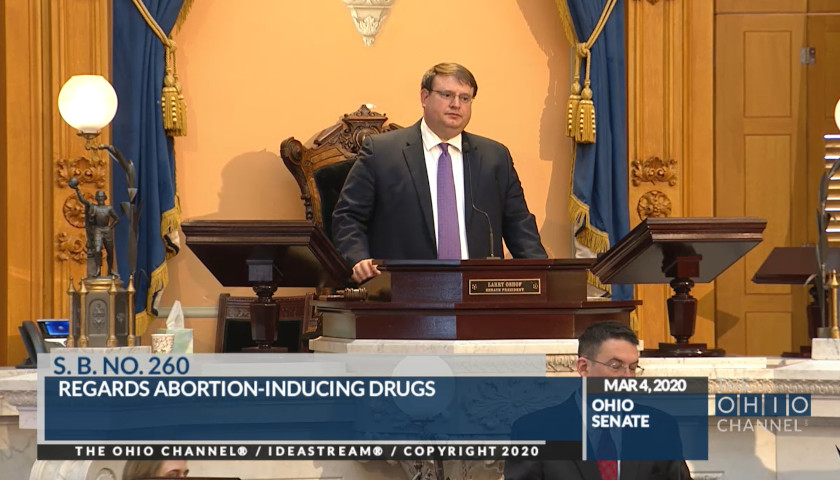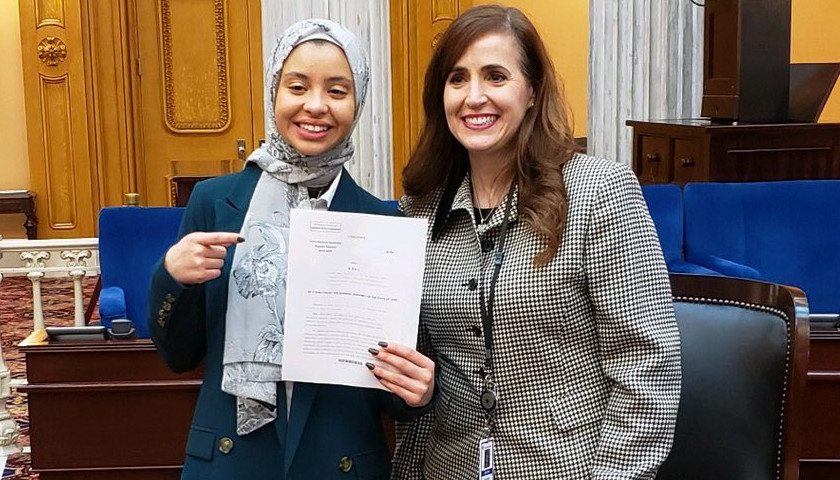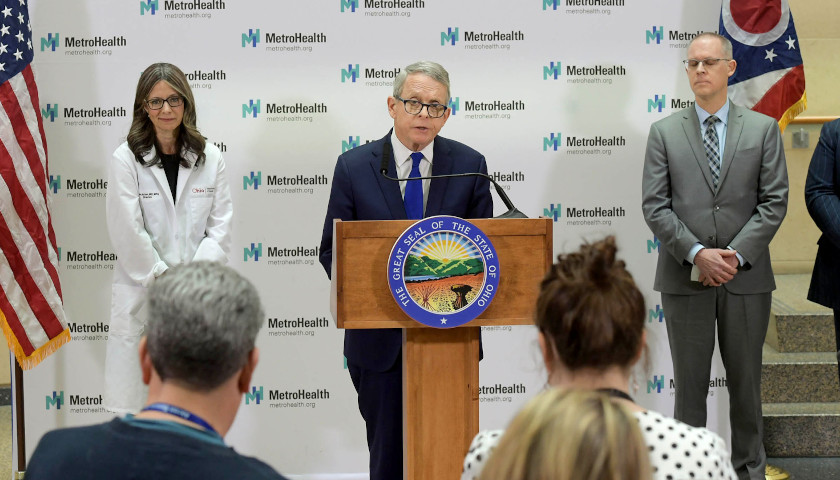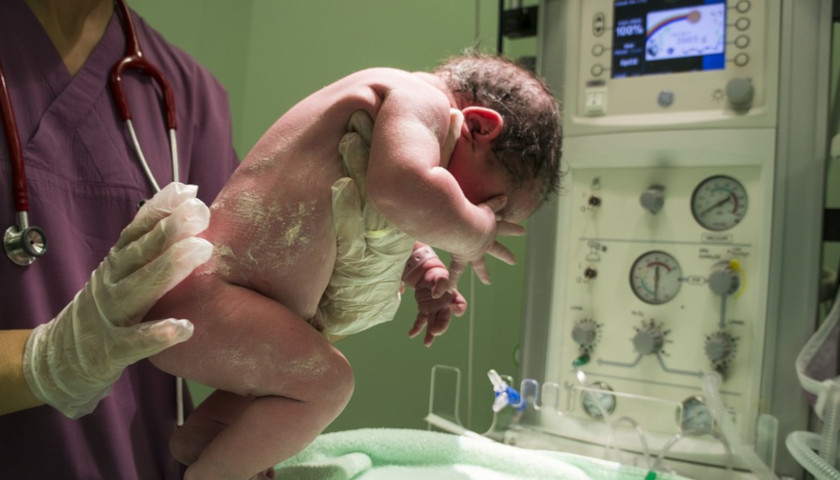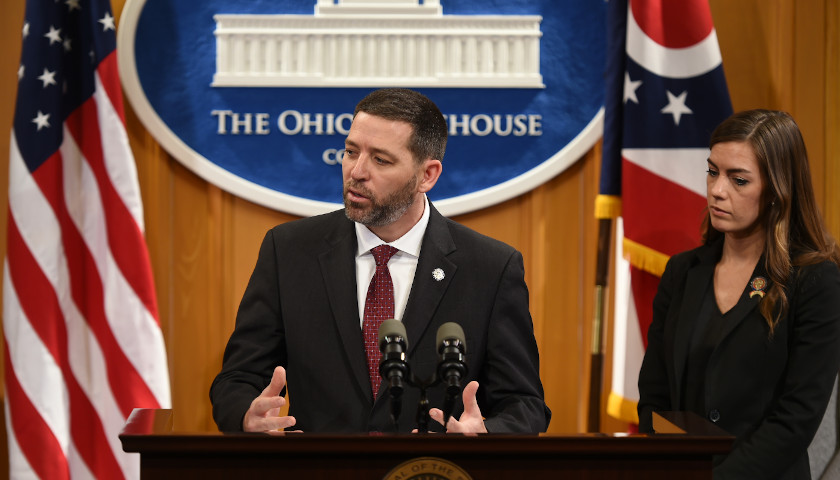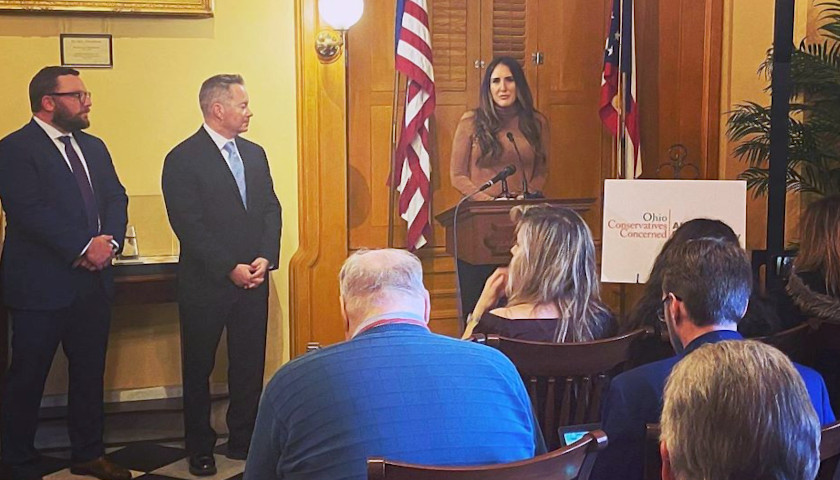Tennessee has brighter days coming in the future as the coronavirus model used by the White House has lowered its projections for the state’s COVID-19 peak. The University of Washington’s Institute for Health Metrics and Evaluation (IHME) model has pushed up Tennessee’s projected coronavirus peak for hospital resources by one day from April 18 to April 17. Last week, the IHME model said the Volunteer State would see its peak for hospital resources on April 26. Based on the previous April 26 projection, Tennessee was expected to need 3,494 beds for its hospitals, including 525 beds for the intensive care unit (ICU). However, the updated IHME projection displays Tennessee needing 1,244, which is a decrease of 2,250 beds. In terms of death, the older IHME model had Tennessee experiencing 1,067 fatalities. But one week later, the new model sees Tennessee having 617 deaths. It must be noted, the projection on Monday anticipated Tennessee having 584 deaths. Between April 17 to April 20, the updated projection shows an average of 25 Tennesseans dying. Previously, the IHME projection had April 26 through April 28 as the stretch were the highest daily death rates. IHME predicts Tenneesse’s fatality rate will flatline around…
Read the full storyAuthor: Zachery Schmidt
New IHME Model Decreases Its Ohio Coronavirus Projections
The University of Washington’s Institute for Health Metrics and Evaluation (IHME) model has lowered its coronavirus projections for Ohio. Last week, the IHME model projected the coronavirus peak for hospital resources in Ohio would be April 20, and also showed that Ohio would need 5,609 beds, including 854 beds for the intensive care unit (ICU). In addition, this old model projected Ohio would experience 1,672 fatalities by August 4. Fast forward one week, and the picture IHME is painting for Ohio is far more optimistic. The IHME projection on April 8 shows that Ohio reached its coronavirus peak for hospital resources yesterday, which is a decrease of 12 days. The number of projected beds needed for the state’s peak decreased by 4,404 beds to 1,205. Furthermore, the ICU beds needed for Ohio’s coronavirus peak fell by 617 beds to 237. Projected Fatalities occurring by August 4 also went down by 1,183 to 489. The old IHME model projected the highest death toll day in Ohio was April 23 with 57. However, the updated model displays April 12 being the day Ohio experiences the most deaths with 26. By May 1, the updated model shows Ohio having between 0 and…
Read the full storyHealth Director Amy Acton Warns of Tough Weeks Ahead in Ohio, Uses Chart with No Numbers to Explain
Ohio Department of Health (ODH) Director Amy Acton said Tuesday the next couple of weeks will be tough for Ohioans as the state braces for its projected coronavirus peak.
Read the full storyOhio Department of Education Sets New Graduation Guidelines for High School This Year
The Ohio Department of Education (ODOE) announced on Monday new guidelines for students set to graduate this year.
Schools in Ohio have been closed since March 17 after Gov. Mike DeWine canceled them due to the COVID-19 pandemic. Currently, schools remain empty as Ohio extended its “stay-at-home” measure until May 1.
DeWine has not decided if schools will open after May 1, but the governor said in March that schools could be closed for the rest of the academic year.
Read the full storyWho Are the Ohio State University Epidemiologists Working with the Ohio Health Department on Its Coronavirus Model?
Due to the coronavirus pandemic, the state of Ohio has been in an effective shutdown for 12 days. Governor DeWine and Ohio Department of Health (ODH) Director Amy Acton have, on several occasions, referred to an evolving series of slides depicting what they say are projections of the number cases of the coronavirus disease in Ohio between March 1 and the end of May to justify these extraordinary actions. However, despite repeated requests by The Ohio Star, there has been a lack of transparency about the data used to make these projections, as well as the people studyin. The ramifications of the “data driven” policy decisions – like the Stay-at-Home order – have been immediate and life-altering for many. In the last two weeks alone, 468,414 people have filed for government assistance. The number of unemployment requests will continue to increase as Ohio is under a “stay-at-home” order until May 1 – five days after the state’s Department of Health say will be the peak of the virus’ impact on April 25. One slide used by ODH Director Acton disclosed that the data the ODH has been using in its projections came from Ohio State University (OSU)’s Infectious Disease…
Read the full storyOhio Department of Health Lacks Transparency on Ohio State University Professors Helping It with Controversial Coronavirus Projection
The Ohio Department of Health (ODH) continues to lack transparency on who is helping the health department with its controversial coronavirus projection.
Read the full storyGov. DeWine Lengthens Ohio’s Stay-at-Home Order Until May 1
Gov. Mike DeWine announced Thursday he will extended – both in duration and scope – Ohio’s “Stay-at-Home” Order until May 1. The original order was set to expire on Monday, April 6.. Ohio Department of Health Director Amy Acton signed the updated order on Thursday. The new stay-at-home measure will take effect midnight on Monday. “We understand that this is tough – it is very difficult. But, I would not be making these decisions if it wasn’t a matter of life and death,” said Governor DeWine. “We have to keep this monster down. It’s not dead – it’s very much alive.” Ohio is one of 38 states that are currently on a stay-at-home order, according to The Hill. DeWine has been one of the most aggressive governors in combating the Chinese virus. In March, the governor closed down schools, banned mass gatherings, shut down restaurants and delayed Ohio’s presidential primary. With the stay-at-home order extension, unemployment numbers will likely increase during April. In the last two weeks, 468,414 Ohioans have filed for unemployment benefits, which is more than all of the 364,603 jobless claims that happened in 2019. To help Ohioans through the coronavirus pandemic, DeWine created an economic…
Read the full story272,117 New Unemployment Claims This Week in Ohio, One of Worst States in Nation
Unemployment numbers in Ohio continue to surge as the coronavirus pandemic causes another 272,117 people to claim unemployment benefits, according to Fox19. Last week, 196,297 people filed for unemployment benefits. This means that in the last two weeks 468,414 Ohioans have filed for government assistance, which is more than all of the 364,603 jobless claims that happened in 2019. Last week, 6.6 million Americans filed for unemployment benefits for the week of March 25. This beat the previous record of 3.3 million people that was set the prior week, according to the Bureau of Labor statistics. Previously, the two highest weeks for unemployment claims came in 1982 with 695,000 and in March 2009 at 665,000, CNBC reports. Of these almost 10 million jobless claims, Ohioans make up almost five percent. To put this into perspective, Ohio had a total of 13,951 unemployment claims from March 1 to March 14. Yet these last two weeks, the Buckeye State saw the third biggest jump in total number of these claims, according to PBS. This was a 3,347 percent increase. The number of Ohioans who will be laid off because of COVID-19 is likely to increase as Gov. Mike DeWine said this…
Read the full storyModel Cited by White House Officials Projects Ohio Hospitals Have Enough Capacity to Handle State’s Upcoming Coronavirus Peak
A new epidemiological model cited by White House officials shows that Ohio hospitals have sufficient regular hospital bed and ICU hospital bed capacity for when the peak of the coronavirus hits the state in the upcoming weeks. According to the Institute for Health Metrics and Evaluation (IHME) model, Ohio is projected to see its resources peak on April 20. The model shows that the Buckeye State will need 5,609 beds; however, the state presently has 14,290 beds available, according to the study. Furthermore, Ohio is expected to need 854 intensive care unit (ICU) beds by April 20, the date the model projects the pandemic will peak in Ohio, but it already has 12,238 ICU beds ready to go. In terms of deaths, the IHME model predicts Ohio will have 1,672 by August 4. As of Tuesday, Ohio Department of Health (ODH) numbers show 55 people have died from the coronavirus. Dr. Deborah Birx, the White House coronavirus task force adviser, said recently IHME model, which is funded by the University of Washington and the Bill and Melinda Gates Foundation, shows projections very much in line with how the federal government viewed the situation. Birx and Dr. Anthony Fauci recently…
Read the full storyGov. DeWine’s Claim Ohio Will Reach Peak of 10,000 Coronavirus Cases Per Day Based on Modeling Sleight of Hand, Questionable Evidence, and Unidentified Researchers
Gov. Mike DeWine claimed in a Friday press conference that projections based on a controversial model introduced earlier this month by Ohio Department of Health Director Amy Acton show hospitals in Ohio will be hit hard by the coronavirus in the upcoming weeks. While the daily increase of confirmed cases of coronavirus in Ohio is undeniable, neither DeWine nor Acton have provided much in the way of factual details related to the methodology of the model, the assumptions and data used in it, or the specific identities of the researchers who have created it. And some of the claims made by Acton and DeWine about the model’s predictions stretch credulity. “This is another take on our curves and our graphs,” Acton said at the press conference (at about the 42:43min mark), pointing to a chart on a screen behind her, which is identical to the chart shown below. “But you can see a shadow – this our unmitigated curve – meaning that if we’d done nothing – if we did not take aggressive, decisive action, but we did, and we’ve made a difference, and we’ve shifted over to the model that we’ve wanted to see,” Acton said, pointing…
Read the full storyGov. Mike DeWine State of the State Is Postponed Indefinitely
Ohio Governor Mike DeWine announced Thursday that his annual State of the State (SOS) will be postponed indefinitely due the coronavirus outbreak in the state.
Read the full storyOhio Health Director Amy Acton Dismisses Trump Admin County-Level Risk Assessment
In the coronavirus press briefing Thursday, Ohio Health Director Amy Acton dismissed the Trump Administration’s plan for a county-level approach to identify hotspots throughout the country, and instead asserted that as many as 8,000 new cases per day would be diagnosed as early as May 1.
Read the full storyAbortion Clinic Still Operating in Ohio Despite Governor’s Executive Order and Attorney General’s Letter of Warning
Despite an Executive Order March 17 by Governor Mike DeWine directing health care professionals to postpone elective surgeries to combat the spread of the Chinese Virus and a letter two days later by Attorney General Dave Yost addressed to surgical abortion providers warning them to “immediately stop performing non-essential and elective surgical abortions,” at least one concerned Ohioan successfully made an abortion appointment. Marti Day Folck, who lives in Kettering, Ohio resident, wanted to see if the abortion clinic near her, the Women’s Med Center (WMC), was following what Yost asked them. However, she found out the exact opposite. Folck called WMC Wednesday to schedule an abortion procedure. She told the center that she was 20 weeks pregnant and asked if they were be anyway to get an abortion. The center told Folck that she could get an abortion, and that she could schedule an appointment for consultation Thursday. Folk told The Ohio Star that the WMC said she can come back next week to begin the abortion procedures, which is a two-day process. She noted that the procedure would have cost her $2,400 with $1,200 being paid with financial assistance. Folck said she doesn’t have any plan to…
Read the full storyOhio Relents: Department of Health Releases Negative Test Data, Only 4.7 Percent Test Positive
The Ohio Department of Health (ODH) for the first time in ten days announced the total number of tests the state has conducted.
“Total tested, this is a new number for us,” she said at Wednesday’s press conference. “We have been wrangling trying to see with so many testing sites between hospitals, private labs and the public ODH lab.”
Read the full storyOhio Senate Passes Emergency Legislation Meant to Help Ohioans During the Coronavirus Outbreak
The Ohio Senate unanimously passed emergency legislation aimed at helping Ohioans deal with the coronavirus.
House Bill 197 dealt with a plethora of issues including the state’s primary voting, education, taxes and unemployment benefits.
The Ohio House of Representatives will vote on this bill later today.
Read the full storyMillennials Have the Most Confirmed Cases of the Coronavirus in Tennessee
Tennessee’s cases of COVID-19 data shows Millennials, which represents people born between 1981 and 1996, have the most confirmed cases of the Chinese virus. As of Tuesday, the age group with the most positive cases were people between the ages of 21 and 30. This age range represents 29 percent of the cases in the Volunteer State. The second most likely age group to have the coronavirus are people between 31 and 40 years old, with 19 percent of the cases. In addition, people who are over 80 years old have gotten the least number of cases in Tennessee. Here is a list of the number of cases per age group: 0-10: 9 11-20: 41 21-30: 193 31-40: 126 41-50: 89 51-60: 91 61-70: 65 71-80: 34 80+: 12 Pending: 7 This data is consistent with the data The Tennessee Star reported last week when the most likely people getting the virus was between the ages of 18 and 49. The counties with the most cases are Davidson County (183), Shelby County (99) and Williamson County (64), according to the Tennessee Department of Health. Last week, these counties had a total of 66 cases all together. Furthermore, these counties…
Read the full storyLess Than Seven Percent of People in Tennessee Have Tested Positive for the Coronavirus, Well Below National Averages
Tennessee announced Tuesday that it has a total of 667 people diagnosed with the coronavirus. Even though the number of cases has increased, the percentage of people who have tested positive remains low.
Read the full storyDave Yost Stopped an Amendment Seeking to Regulate Marijuana Like Alcohol
Ohio Attorney General Dave Yost rejected a proposed marijuana-related constitutional amendment Monday that aimed to regulate marijuana like alcohol.
Yost halted the amendment proposal because it did not gather enough valid signatures.
“Because your submission did not contain the verified signatures of at least one thousand qualified electors, we must reject it,” Yost wrote in the letter to the petitioning committee. “Finally, because the petition failed to meet the signature threshold, I have not made any determination concerning the fairness and truthfulness of the proposed summary.”
Read the full storyCanadian Doctor Uses Detroit Physician’s Concept to Rig One Ventilator to Treat Up to Nine People
Ventilators across the world are in scarce supply as the number of coronavirus patients continues to rise, but a Detroit doctor has provided health care workers with an ingenious solution.
To make sure his hospital is prepared, Dr. Alain Gauthier, an anesthetist at the Perth and Smiths Falls District Hospital in Canada, rigged a single ventilator to treat up to as many as nine people at once.
Read the full storyOhio Department of Health Defies CDC, Refuses to Require Labs to Report Both Positive and Negative Results from Coronavirus Tests
Ohio is one of only two states in the union that are refusing to cooperate with requests from the Centers for Disease Control (CDC) to provide accurate data on the total number of positive and negative tests of coronavirus tests conducted in the state. (Maryland is the other state, as reported in the COVID Tracking Project.) “Having data on negatives, as well as positives, helps us understand the burden of disease. Having that data also gives us insight on the amount of testing being done overall,” a spokesman for the CDC told The Ohio Star on Friday. Earlier this week the CDC, through the Families First Coronavirus Response Act, told states they need to send it aggregated data of coronavirus testing. Section 1702 of that law makes it absolutely clear that states are required to provide “aggregated data on testing and results from State and local public health departments.” Aggregated data means complete and comprehensive test results, including both positive and negative results: States and local governments receiving funds or assistance pursuant to this division shall ensure the respective State Emergency Operations Center receives regular and real-time reporting on aggregated data on testing and results from State and local…
Read the full storyDeWine to Business Owners: ‘The Reckless Behavior Must Stop’
Gov. Mike DeWine, during Friday’s press conference on the coronavirus, told business owners that if they don’t follow social distance rules and keep their employees safe there could be consequences.
“Let me make it very clear: I will err on the side of protecting people,” DeWine said at the press conference. “The bad behavior, the reckless behavior, must stop. The protection of life is the most important obligation that I have.”
Read the full storyIs the Ohio Department of Health Refusing to Release Coronavirus Test Data to Conceal Lower Than National Average Percentage of Positive Tests?
During the coronavirus pandemic, Ohio Gov. Mike DeWine and Ohio Department of Health (ODH) Director Amy Acton have taken a number of actions, some controversial, designed to prevent the spread of COVID-19. Just in the last ten days, DeWine has closed bars and schools, postponed primaries and banned mass gatherings. Even more controversially, on Monday Acton defied the order of an Ohio court and ordered the cancellation of the Ohio primary election, a usurpation of the Ohio General Assembly’s constitutional authority to set election dates. Gov. DeWine clearly orchestrated this controversial decision. Despite these dramatic and controversial actions by DeWine and Acton, Ohio has lagged behind every other state in the country in reporting the number of negative coronavirus tests in the state. It stopped releasing that data on Monday. The Center for Disease Control (CDC) said Thursday that every state must report aggregated data of coronavirus testing to it. Currently, ODH only shows the number of confirmed cases, number of counties in Ohio with a case and the number of hospitalizations. This causes concern because last week, Acton and DeWine said they were operating as if 100,000 Ohioans had the virus. “Just the fact of community spread says at…
Read the full storyGov. DeWine Deploys Ohio National Guard to Help Food Banks
Gov. Mike DeWine called in the Ohio National Guard Wednesday to help food banks distribute food during the state’s coronavirus relief efforts.
Three hundred personnel members will deploy to 12 food bank warehouses, which helps provide food to all 88 counties in the state. The National Guard members will help pack and sort food into boxes, distribute food through “no touch” methods, and assist with logistical needs to help protect the public, according to the Ohio Association of Food Banks (OAFB)’s press release.
Read the full storyCNN Called COVID-19 ‘Chinese Coronavirus’ in January, Mainstream Media Says Trump is Bigoted When He Says Same Thing Today
CNN has been critical of President Donald Trump for blaming the Chinese for the coronavirus; however, the network referenced the coronavirus as “The Chinese Coronavirus” on Twitter on January 21.
Read the full storyOhio Issues an Order to Delay Elective Surgeries to Preserve Personal Protective Equipment
The Ohio Health Department announced an order Tuesday that told hospitals in the state to postpone non-life threatening surgeries and procedures in order to safeguard personal protective equipment (PPE) for health care workers.
Read the full storyOhio State University Delays Spring Commencement Ceremony
Ohio State University (OSU) announced Tuesday it has postponed its spring commencement ceremony amid coronavirus concerns.
“Following the Centers for Disease Control and Prevention’s recommendation that no large events be scheduled over the next eight weeks, we have postponed our spring commencement,” Michael Drake, the president of the school said.
Drake said OSU’s preference is to reschedule the event later on in the spring, but a new date hasn’t been chosen.
Read the full storyIn Tennessee, Most People With Confirmed Cases of Coronavirus Are Not Elderly
As a state, Tennessee has a total of 73 positive coronavirus cases, which is the 12th most in the country.
Read the full storyPresident Trump Tests Negative for the Chinese Coronavirus
President Donald Trump tested negative for the COVID-19 virus after taking the test Friday night.
Read the full storyOhio Confirmed Coronavirus Cases Doubles in One Day
Ohio Gov. Mike Dewine and state health leaders announced Saturday that the number of confirmed coronavirus cases in the state had doubled in one day.
Read the full storyGov. DeWine Closes Schools and Bans Mass Gatherings Over 100 to Prevent COVID-19 Spread
Ohio Gov. Mike DeWine took extra steps Thursday to prevent the Chinese coronavirus from spreading in the Buckeye state.
Read the full storyOhio Moves Polling Stations From Senior Citizen Living Areas Amid Coronvavirus Concerns
As the coronavirus continues to spread in Ohio, many elderly Ohioans thinking of voting in the state’s presidential primaries next week may need to find a new polling location.
Read the full storyPresident Donald Trump Temporarily Suspends Travel to EU
In a special addresss from the Oval Office Wednesday night, President Donald Trump announced America is suspending travel to European Union nations for 30 days in an attempt to contain the coronavirus.
Read the full storyUniversity of Dayton and Dayton Police Clash After the School Suspends Classes Over Coronavirus Fears
Dayton law enforcement used riot gear to disperse a large crowd on the campus of the University of Dayton (UD) campus that formed Tuesday night after the school announced earlier that day it will temporarily suspend in-person classes.
Read the full storyOhio State University Temporarily Suspends In-Person Classes
Ohio State University announced Tuesday that the school is suspending in-person classes on campus until March 30.
Read the full storyOhio Bill Wants to Ban Abortion If the Supreme Court Overturns Roe v. Wade
An Ohio State House member introduced a bill Wednesday that would outlaw abortion if Supreme Court overturns Roe v. Wade.
Read the full storyBipartisan State Senators Announce Up Coming Legislation Seeking to End Death Penalty in Ohio
A group of bipartisan state senators held a press conference Wednesday to announce they would soon put forward a piece of legislation to end the death penalty in Ohio.
Read the full storyPresident Trump Visits Tornado Damaged Areas in Middle Tennessee
President Donald Trump visited Tennessee on Friday after the Volunteer State had a series of storms that produced tornadoes earlier this week that killed 25 people.
Air Force one landed to a contingent of officials and lawmakers. The president did not make a statement or take questions, instead opting to board Marine One for a 40-minute helicopter ride due east to Cookeville, which was one of the hardest-hit areas.
Read the full storyOhio State Senate Passes Bill Outlawing Telemedicine Abortion Procedures
The Ohio State Senate passed a bill Wednesday banning telemedicine abortion procedures.
Read the full storyDave Yost Joins Other State Attorneys General in Supporting States’ Rights to Regulate Drug Prices
Ohio Attorney General Dave Yost joined a bipartisan coalition this week that supports states’ rights to regulate prescription drug prices.
Read the full storyJoe Biden Wins Tennessee Presidential Primary
Joe Biden won the Tennessee Presidential Primary on Tuesday night, according to the Tennessee Secretary of State. This victory was part of a huge night for Biden on Super Tuesday.
Read the full storyOhio Bill Proposal Would Protect State Athletes’ Religious Freedom of Expression If Passed
An Ohio state Senator proposed a bill last week that would protect religious freedom of expression for athletes in the state.
Read the full storyJim Jordan Wins Americans for Limited Government’s 2019 Congress Man of the Year Award
Americans for Limited Government (ALG) awarded Ohio Rep. Jim Jordan (R-OH-04) Congressman of the Year for 2019.
Read the full storyGovernor DeWine Addresses Ohioans’ Concerns About the Coronavirus in the State
Ohio Governor Mike DeWine and Ohio Department of Health (ODH) Director Amy Acton held a press conference on Thursday to address Ohioans’ worries about the potential impact of the coronavirus.
Read the full storyInfant Mortality Rates Continue to Decline in Ohio
The Ohio Health Department (OHD) released numbers this week that shows the infant mortality rate in the Buckeye State is declining.
Read the full storyCincinnati City Councilwoman Arrested on Corruption Charges
Federal officials arrested Cincinnati Councilwoman Tamaya Dennard Tuesday for allegedly trying to sell her council vote for money. The councilwoman faces up to 50 years in prison if found guilty of these corruption charges.
Read the full storyOhio Bill Proposal Would Prevent Biological Men From Competing in Women’s Sports
Two Ohio state representatives are set to introduce a bill this week that would prevent biological men from competing in women’s sports.
The Save Women’s Sports Act (SWSA), co-sponsored by Jena Powell (R-Arcanum) and Reggie Stoltzfus (R-Paris Twp.), will designate that sport teams be based on a person’s biological sex rather than how he or she feels.
Read the full storyOhio House Passes Bill Aimed at Helping the State’s Truck Driving Shortage
The Ohio House of Representatives passed a bill this week that aims to increase training opportunities for truck drivers as the state’s demand for them grows.
Read the full storyAttorney General Dave Yost Authorizes Initiative Seeking to Change Ohio Elections Laws
Ohio Attorney General Dave Yost approved the summary of a petition for a ballot initiative that seeks major changes to Ohio’s election laws.
Read the full storyInitiative Proposal Wants to Implement Term Limits on Ohio State Legislatures
A group trying to alter the way term limits work in the Buckeye State filed petition paperwork with Attorney General Dave Yost Wednesday. A group called Ohioans for Legislative Term Limits (OLTL) wants to limit the number of years state elected officials can serve to 16. Currently, an amendment passed by Ohioans in 1992, allows politicians to serve eight continuous years in either chamber. However, elected officials can return to the Senate or House after sitting out four years. “This initiative would institute a 16-year lifetime ban that would close the current loophole that allows legislators to shuffle back and forth between the House and Senate indefinitely,” Columbus attorney Don McTigue told the Toledo Blade. If Ohioans pass this initiative, term limits would be counted on January 1, 2021. This means it will affect politicians being elected this November. McTigue also told the Toledo Blade this group has supporters from both political parties. “A campaign structure is being organized now,” he said. “You will be hearing more from the campaign as things develop in the weeks and months ahead.” Yost has until March 2 to determine if this proposal can move forward. If he does approve the proposal’s language,…
Read the full storyOhio Conservatives Launch Branch of Organization That Aims to Repeal the Death Penalty
Ohio conservative leaders announced the launch of the Ohio branch of Conservatives Concerned About the Death Penalty (CCATDP) at a press conference Tuesday. CCATDP is an organization that questions how its conservative values align with the death penalty.
Read the full story
